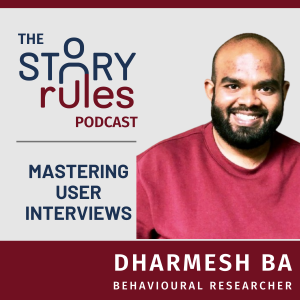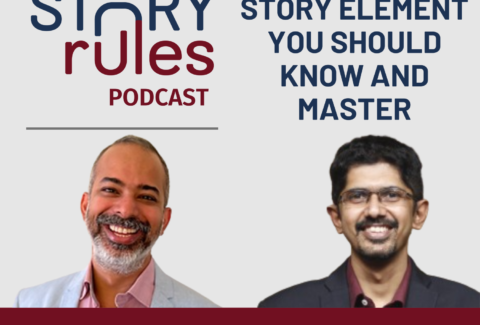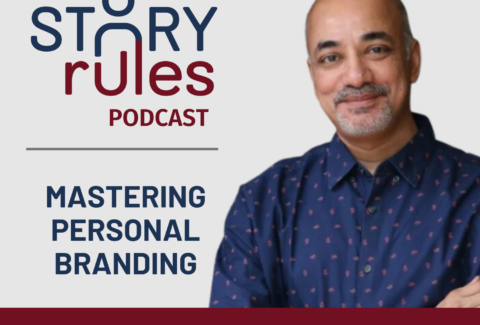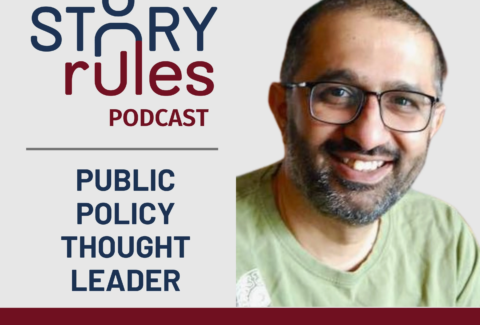5 words/phrases to connect your data story

5 words/phrases to connect your data story
Linkin Part(s):
Think of your data-story as a train of messages. Your main theme is the engine. Each message corresponds to a car/wagon of the train. It’s a big presentation – you’ve thought through your messages and organised them in the right flow (first 2AC, then 3AC, then Sleeper etc.). But something’s missing.

Yes, the couplings.

In this post, we will talk about these crucial, though often overlooked links, that hold the story together, and sometimes signify a change in its direction.
Let’s explore 5 such ‘links’ – words/phrases that can significantly improve your story flow.
1. Before this/Until this point … And then
This one looks at a contrast between what happened and what was the norm before. It is especially useful when dealing with events/achievements that we take for granted. A recent podcast – by TED Radio Hour – dealt with Abraham Maslow’s Hierarchy of Human Needs. What caught my attention was the way they started the story.
Normally you’d have just started with Mr Maslow, details of his theory etc. For instance, take the Wikipedia entry on the theory – it gives accurate details about when Maslow’s paper was published, the name of the publication and the details of the hierarchy itself. All accurate, but doesn’t answer a simple question: Why was this special? What was remarkable about him and his theory?
And that’s where the podcast works. Here’s how they started: “Hey, this is Guy here, and this episode is all about Abraham Maslow’s Hierarchy of Human Needs. Did you know that up until the 1950s psychologists mostly focused on what was wrong with people. And then, came Maslow … Instead of looking at what was wrong with his patients, Maslow was one of the first to think about what’s right with the person.” And then it goes on to discuss the actual theory.
Why is this important? Describing an achievement (especially a historic one) suffers from one major issue. Once we have something, it seems normal/taken-for-granted/par-for-the-course. To convince the audience why that achievement was special, you need to describe how things were prior to that event/achievement. And that’s where the phrase “Before this… and then” comes in handy.
Some corporate examples for this:
- Say your department launched a new process for submitting reimbursement claims. Don’t just say “launched new claims process” as a bullet point in your Review presentation slide. Instead, say “Before this initiative, employees spent an average of 85 minutes every month to file their claims. And then we launchd this new process in June. By removing X and enabling Y, we have brought that down to 45 mins – a 50% reduction!”
- This HUL slide that we had discussed earlier is also a good example of this link, since it references what happened in a similar situation before.
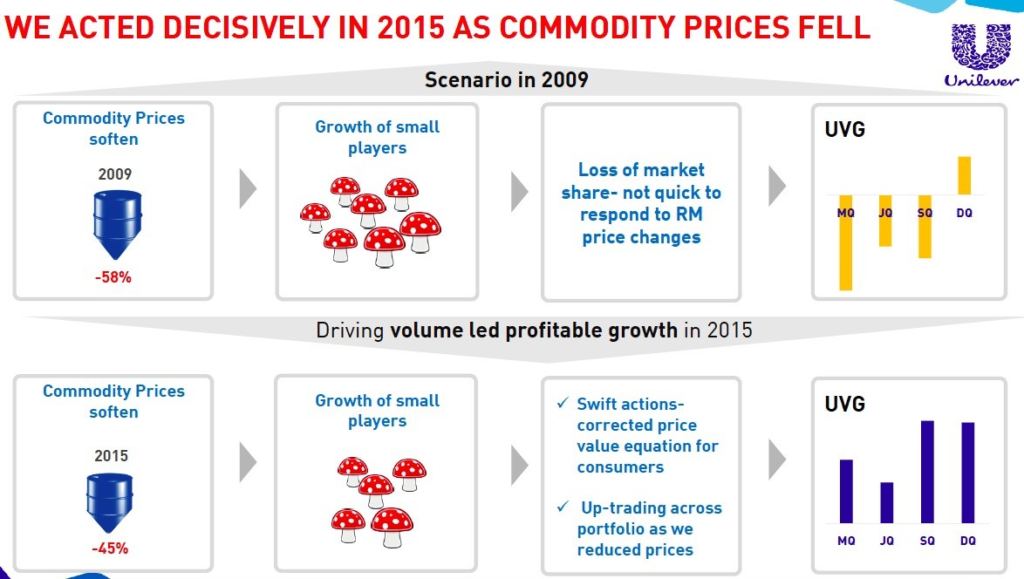
2. You would think/What’s your guess?
Got a surprising finding in your story? Especially if it contrasts from what the audience would expect it to be? Then don’t directly jump into the finding. Always, always, give the counter-factual, or make them guess.
Comedy show legend, Jon Stewart was a master at using this tactic. In an old episode of the Daily Show (Apr-2013) he unpacks the grim happenings in post-Arab Spring Egypt. Bassem Youssef, a popular Egyptian comedy-show host had been arrested for insulting the Egyptian President and Islam.
Well, at least that’s what happened. Here’s Jon’s take on it (watch the 2-min clip before reading ahead).
So what do Jon (and the Daily Show team) do differently here:
- First he gives some context: Egypt’s failing economy, poor infrastructure and general dire situation
- Then he sets the crucial ‘You-would-be-thinking’ expectation, by saying “I gotta tell, it sounds like this new Egyptian President .. has got his hands full. Can’t wait to see how he tackles these complex and urgent issues”
- And then he lets rip: the next ‘message’ (in the form of a video clip), stating that the Public Prosecutor has ordered the arrest of popular TV presenter Bassem Youssef. This itself shows a great contrast – between what the government should be focusing on (economy, infrastructure, safety), and what it is. (*cough* Padmavati *cough*)
- He doesn’t stop there. On learning about the arrest, he arrives at a logical realisation (again a ‘you-would-assume’ statement): (Looking at Bassem Youssef’s photo) “Who’s that guy, I bet he’s a terror … sabotaging Egypt’s infrastructure, harassing Egyptian women, or ‘unemploying’ Egyptian people.. What’d he do?” – it’s all very funny and reinforces the point – clearly this guy hasn’t done anything serious.
- This is followed by the next message (video clip): Bassem Youssef hosts a TV show …
- Some more mock-horror from Jon: “This is OUR Bassem?!” (Youssef had appeared on the Daily Show in the past). “I was shocked… this whole time I’ve been consorting with a criminal! Tell me, what did he DO, I’m ready, I’m ready!”
- And finally the big reveal: A comedian has been arrested for some harmless jokes on the President of Egypt. The final punchline hits two birds with one stone – the Egyptian establishment and Fox News!
- Incredible storytelling by the Daily Show team – how they unpack the ludicrousness of the whole issue, layer by layer.
(If you’d like to see the entire hilarious takedown, click on this link.)
Can you use this principle at work too? Sure, here are some examples:
- Say you did a survey of employees, on their willingness to volunteer for social causes, and are presenting the findings to your peers. Instead of just telling the number, you could go: “We did a survey on what share of employees were willing to volunteer for social causes. What’s your guess of that number?” (Say, the consensus is 15-20%). “Guess what, the number surprised us too – it is 40%!”
- Or take a company which has done well with a breakthrough product, in an industry dominated by tech geeks from high-end institutes. They are presenting to a potential funder: “Our product has won several tech awards.You’d assume that our tech talent is expensive and from top-tier institutes. But our tech lead is a college-dropout and we have a diverse set of people passionate about technology.”
So, the above two phrases (‘Before this’ and ‘You would think’) are fairly powerful and under-used. Besides them, here are 3 more simple words/phrases that we all know of, but don’t apply as much as we should when telling a data-story.
3. But/However
The simplest and most used link – because it signifies a change in the story’s direction. Some examples:
- Revenue was up 15%. However profitability was up only 5%
- The market size is small. However it is growing rapidly.
- Overall brand recall was low compared to Competitor C. But, in the 18-30 age category, our recall is higher.
So, keep your eye open for contrasting messages in your story. Think of each of the message statements above as a separate message/slide in your presentation (e.g. separate slide for Revenue being up 15% and separate for profitability). The link word is what connects the two slides.
4. Because/Driven By (Mirror: therefore/consequently)
This is simple cause-and-effect. Examples
- (Message 1) The Indian domestic travel market is growing rapidly. (Message 2) Growth driven by 3 factors: higher disposable incomes, cheaper travel and better connectivity
- (Message 1) Hotel revenue has increased at 16% CAGR over the last 5 years; (Message 2) primarily driven bybetter ARR (room yields)
The mirror image of this link is ‘So/Therefore/Consequently’. For instance:
- We haven’t been updating our blog regularly. Consequently readership has been affected. (Ouch)
5. Despite/Though/Although
This is a factor that could’ve led to a different outcome, but did not (mostly because of another factor). Examples:
- Our market share increased over last year; despite lower spend on sales promotion (here you may add: driven by strong word of mouth, post ad-campaign)
- Although Jack and Jill are not friends, Jill followed Jack up the hill (shameless reference to older post)
Summing up
So now you know that it’s not just important to have your story messages right, you also need to link them with the right connector. Do that and your train of thought will surely reach the intended destination.


